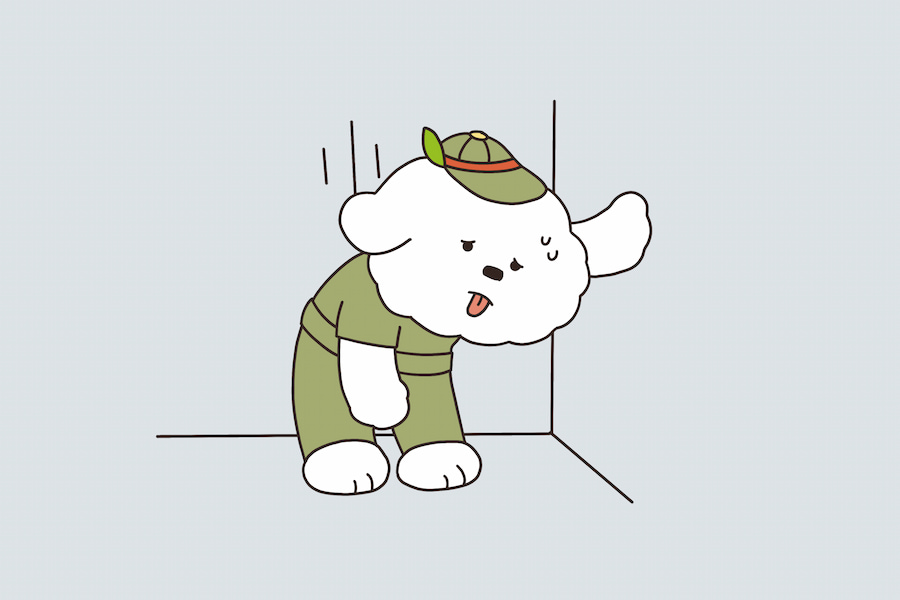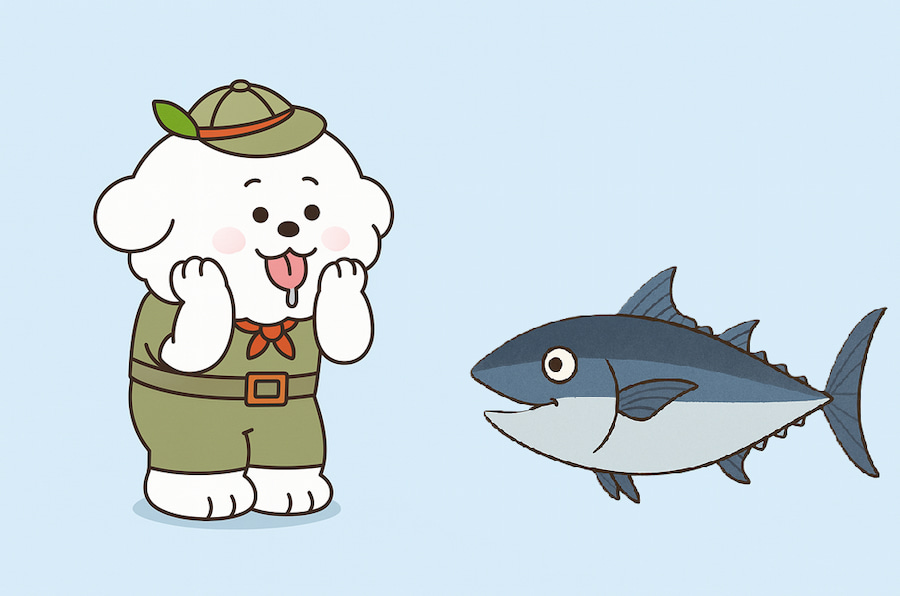Although salt is a necessary component of our daily diet, our dogs do not share this opinion. Dogs that consume excessive amounts of salt may suffer from serious side effects such as electrolyte imbalance, dehydration, and even potentially fatal illnesses. But it does not mean their diet has to be completely free of salt. Dogs need a moderate quantity of salt to maintain numerous body functions, just like people do.
I’ll discuss every detail about dogs and salt intake in this article.
Can Dogs Eat Salt?
Dogs can have salt; however, consuming too much can lead to sodium poisoning in dogs.
Dogs, like humans, require a specific quantity of salt in their diets daily. Sodium chloride, or salt, is a substance that helps control bodily fluids and supports the proper functioning of the neurological system and organs.
Is Salt Bad for Dogs?
An excessive amount of salt in the body can result in a higher fluid load, which raises blood pressure and contributes to heart disease symptoms. Salt toxicity in dogs results from consuming excessive salt.
Salt poisoning in dogs is more frequently caused by dehydration. It’s a huge concern during winter when the water dish freezes, or the water dish is spilled and not refilled, or if you’re on holiday and your house-sitter overlooks to add fresh water. Every pet needs to have access to fresh water at all times.
In addition to gastrointestinal issues like vomiting and diarrhea, a dog suffering from salt toxicity may eventually show neurological symptoms like seizures and even pass away.
Preventing salt poisoning in dogs is preferable to treating it, as it can be a terrifying and serious emergency. Rock salt, homemade play dough/ornaments, soy sauce, table salt, savory foods, and seawater should all be avoided by your dog. But in the worst-case scenario, don’t wait for symptoms to appear or get worse; instead, visit your veterinarian right away for help.

Lee&Pol has thoroughly removed salt through a meticulous desalting process over 24 hours to prevent excessive salt intake.
How Much Salt Can a Dog Eat?
According to the AAFCO, dogs’ diets should include 0.3% to 0.8% salt on a dry matter basis.
It’s critical to monitor your dog’s sodium intake to avoid health problems, including dehydration, electrolyte imbalances, and salt toxicity. Dogs with specific medical issues, including kidney or heart illness, might need to restrict their sodium intake even more under the supervision of a veterinarian.
How Much Salt Can a Dog Have Per Day?
Guidelines released by Small Animal Clinical Nutrition (SACN) recommend that a young adult dog’s daily food contains 0.2-0.4% salt. This range is described as “risk factor management” by them. Based on roughly 250 grams, or approximately 2 cups of kibble per day, and using the higher end of the range, that would equate to approximately 500–1000 mg of sodium for a medium-sized dog. The daily dietary advice for senior dogs is reduced to 0.15-0.4%.

They are only recommendations; for healthy dogs at any time of life, there is no maximum amount of salt that has been defined, and these numbers are not always supported by data suggesting a beneficial limit.
Should I Put Salt in My Dog’s Food?
It is not required to add salt to your dog’s meals because most conventional dog food recipes provide the right quantity of salt for their bodies. Dogs can consume salt, but just like people, they should do so in moderation. Since salt is a necessary ingredient, most dog foods already contain 0.3% of it. Since your dog cannot tolerate too much salt, do not salt their food. For dogs, the toxic dose of salt is 2-3g/kg of body weight.
Low-salt & Salt-free Dog Treats
Lee&Pol’s Dried Pollock
Lee&Pol’s Dried pollock is a healthy, low-salt, high-protein, and omega-3-fatty acids rich treat for dogs. These crispy treats are perfect for offering your pet a tasty, nutritious treat or as a way to praise good behavior. They ensure a wagging tail while promoting oral health and providing vital nutrients for your dog’s well-being.

Lee&Pol offers the best treats for your dog’s health by preserving the rich nutrients of dried pollock while removing excess salt.
Bananas
Rich in potassium, vitamins, and fiber, bananas are a healthy and delicious treat for dogs. They are easy to digest and provide a natural energy boost, making them an excellent choice for active pups.
Strawberries
Packed with vitamin C and antioxidants, strawberries are not only tasty but also offer numerous health benefits for dogs. They can help support a strong immune system and promote healthy skin and coat.
Blueberries
Blueberries are a superfood for dogs, containing antioxidants that can help fight inflammation and support cognitive function. Their small size and sweet flavor make them a perfect low-calorie treat for furry friends.
Apples
Apples are a crunchy and refreshing treat that can aid in dental health by helping to clean teeth and freshen breath. They are also a good source of dietary fiber and vitamin C.
Green Peas
Green peas are a low-calorie, nutrient-dense treat that provides dogs with essential vitamins, minerals, and plant-based protein. They are also a great source of fiber, which can support healthy digestion.
Carrots
Carrots are an excellent source of beta-carotene, which is converted to vitamin A in the body and supports eye health. They are also a crunchy and satisfying treat that can help promote dental hygiene.
Can Dogs Benefit From A Low-Sodium Diet?
Some dogs with specific health conditions, such as heart disease or kidney disease, may benefit from a low-sodium diet. Consult your veterinarian to determine if your dog would benefit from a diet lower in salt.
What Happens if a Dog Eats Salt?
Your dog might become dehydrated very fast if it consumes salt alongside its regular meals. As you may have noticed, your dog might, therefore, drink from its bowl more frequently.

Since thirst is the most typical indicator of dehydration, your pet may need to go outside soon after drinking more than usual.
Dogs who overindulge in salt may develop salt toxicity. However, if your dog consumes water after consuming a salted diet and is able to remove the salt from its body, it should be fine. Having said that, if left untreated, an excessive amount of salt can cause salt poisoning and even death.
Symptoms of Salt Poisoning in Dogs
The risk of salt poisoning varies depending on your dog’s size; smaller breeds are more susceptible. Even a small amount of salt can make your small dog ill, while the same amount of salt may not cause any issues in larger dogs.
A dog may develop salt toxicity by consuming as little as two to three grams of sodium chloride for each kilogram of body weight, according to the American College of Veterinary Pharmacists. This implies that a huge breed like a Great Dane would need to eat more than four tablespoons, yet a toy breed like a Chihuahua could fall sick after consuming less than a teaspoon.
The following symptoms indicate that your dog may have eaten too much salt:
- Decreased appetite
- Diarrhea
- Lethargy
- Excessive thirst or urination
- Vomiting
- Being shaky on their feet
- Tremors or seizures
What Should You Do if Your Dog Eats Salt?
If a puppy eats a diet heavy in sodium or salt, it will quickly become dehydrated. A tiny bit of salt from the plate is okay, but if the dog eats a lot of sodium in a short time, it may get salt sickness.

Excessive salt consumption in dogs can result in neurological issues and even death. Visit your vet right away if your dog has consumed excessive salt.

Conclusion
Although salt is a necessary food for dogs, moderation is the key. Consuming too much salt can have negative impacts on your dog’s health, such as electrolyte imbalance, dehydration, and even fatal salt poisoning. You can preserve your dog’s overall health and prevent future problems by following prescribed standards, speaking with your veterinarian, and keeping an eye on their salt intake. Remember that the secret to your dog’s longevity and pleasure is a well-balanced diet catered to their unique requirements.
FAQ
Dogs require salt for their cells to operate, and a healthy dose is between 0.25 and 1.5 grams per 100g of food. When consumed in moderation, salt promotes healthy cellular processes in dogs, including acid-base balance, fluid balance, and nerve signal transmission.
Salty meals are often not favored by dogs. High-salt diets should be avoided because they can cause salt toxicity in dogs. In dogs, excessive salt intake can result in vomiting, diarrhea, and seizures.
Dogs are allowed to eat salt, but only in moderation. Their diet must include salt, which is roughly 13 mg/kg of body weight each day. Although it is necessary, if they consume too much, they may get poisoned. If dogs consume excessive amounts of seawater, they may develop sea salt toxicity.
Salty meals are often not favored by dog. Salt is an electrolyte and is vital to the health of your dog. It contributes to the proper balance of bodily fluids and supports neuron and muscle function. Dogs who consume excessive amounts of salt run the risk of developing salt toxicity.s. High-salt diets should be avoided because they can cause salt toxicity in dogs. In dogs, excessive salt intake can result in vomiting, diarrhea, and seizures.
Yes, salt is necessary for dogs to maintain proper neuron, heart, and muscle function and fluid balance. Nevertheless, a dog’s existing illnesses and overall well-being will determine how much salt it requires.
Foods that are high in salt, such as cured meats like bacon or ham, should be avoided as treats for dogs. High salt content in these foods can lead to salt toxicity if consumed in large amounts. Stick to dog-safe treats and avoid feeding them human foods with high salt content.
Salt toxicity symptoms in dogs include excessive thirst, vomiting, diarrhea, lethargy, tremors, seizures, and in severe cases, coma. If you suspect your dog has ingested too much salt, contact your veterinarian immediately.
No, it’s not recommended to give your dog saltwater from the beach. Sea water contains a much higher concentration of salt than what is safe for dogs. Ingesting large amounts of seawater can lead to salt toxicity in dogs, causing symptoms like vomiting, diarrhea, and dehydration.



